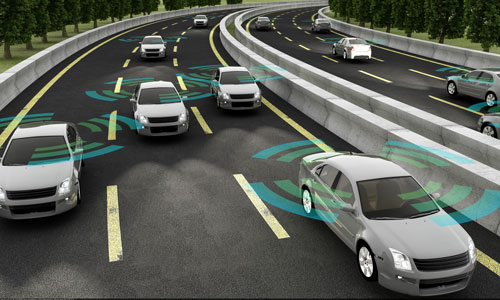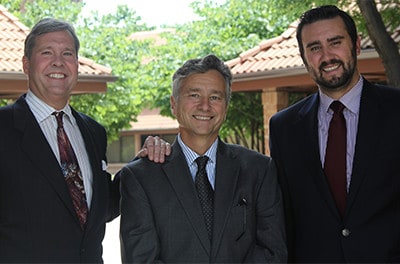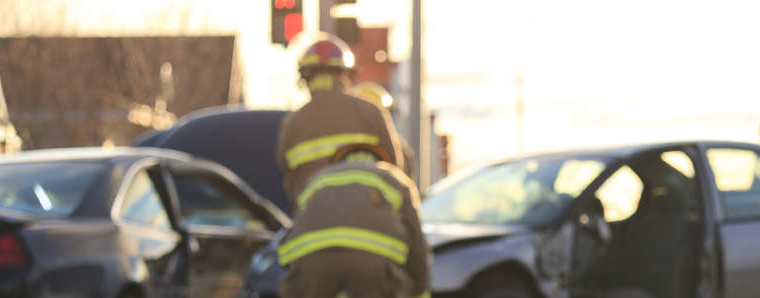 Both blind spot detection technology and lane departure warning technology have shown themselves to be highly effective as far as preventing drivers from leaving their designated lane, and, as a result, lowering the accident rate. In fact, according to the NY Daily News, lane departure warning systems have decreased accident rates by 11 percent or more, while blind spot monitoring has done even better, cutting accident rates by 14 percent. These numbers were gleaned from studies done by the IIHS, who sifted through law enforcement reports from 25 states to find accidents which occurred between 2009 and 2015, involving vehicles which came with this life saving auto safety technology.
Both blind spot detection technology and lane departure warning technology have shown themselves to be highly effective as far as preventing drivers from leaving their designated lane, and, as a result, lowering the accident rate. In fact, according to the NY Daily News, lane departure warning systems have decreased accident rates by 11 percent or more, while blind spot monitoring has done even better, cutting accident rates by 14 percent. These numbers were gleaned from studies done by the IIHS, who sifted through law enforcement reports from 25 states to find accidents which occurred between 2009 and 2015, involving vehicles which came with this life saving auto safety technology.
Lane Departure and Blind Spot Warning Significantly Reduce Auto Crash Fatalities
Not only did lane departure technology decrease the total crash rate, the technology resulted in a staggering 86 percent reduction in auto accident fatalities. The IIHS believes if every car was equipped with lane departure warning technology, more than 55,000 injuries which resulted from auto accidents in 2015 could have been entirely prevented. Blind-spot monitoring technology in every car could have prevented approximately 50,000 collisions, and 16,000 serious injuries in 2015 as well.
Although these two technologies have been shown to save lives and prevent crashes, it is important to note that the technology is hardly foolproof. Unfortunately, some drivers deactivate the systems because they find them “annoying,” plus the IIHS study found that at least a third of all drivers involved in a lane-drift situation which resulted in a collision were either fatigued, ill, or impaired. Forward-collision warning systems and automatic braking were also find to significantly reduce auto crashes—23 percent and 40 percent respectively.
Other Life-Saving Factors
In addition to new safety technology features on more cars, the federal standards regarding stronger roofs and improved steering columns—as well as some five-dozen more federal safety standards which automakers are now required to follow—have resulted in a major decrease in auto fatalities. Improved safety belts and airbags inside the car as well as roadway improvements, such as safer guardrails, all go into the equation for fewer traffic deaths.
Further Reading: Ultimate Guide to Motorcycle Safety in Colorado
Seat Belts Save Lives
The use of seat belts is one of the biggest lifesavers, with about 88 percent of all drivers now buckling up each time they get in a vehicle. Studies have shown that those who routinely buckle up are 45 percent less likely to die in a car collision. Electronic stability control, which is designed to prevent deadly rollovers, has resulted in about 42 percent fewer deaths from auto accidents, and basic structural changes to vehicles help them absorb crash energy before it reaches the occupants of the automobile. Graduated licenses for teenage drivers has helped reduce the number of teen auto accident deaths, while tougher drunk driving laws have helped reduce impaired driving fatalities.
Study Shows Lives are Being Saved Through Technology
The IIHS study confirmed that millions of lives in the United States have been saved by mandatory vehicle safety standards, as well as tougher state and federal driver regulations, however not everyone agrees. Another safety researcher, Leonard Evans, believes the focus on technology-laden vehicles rather than working on modifying bad driving behaviors has resulted in a failure of “near incomprehensible magnitude” when it comes to auto accident fatalities.
Evans believes our focus should be on driver behaviors such as distracted driving, impaired driving, careless driving and reckless driving, and that rather than simply adding new technologies to vehicles, we should be engaged in an all-out campaign for better drivers. A huge number of auto accidents today are due to distracted driving behaviors such as talking on the phone, reading or sending texts, fiddling with music systems, GPS systems or other car controls, monitoring the behavior of the children in the back seat, talking to passengers, or simply daydreaming on the commute to work. So, while the new car technologies are definitely saving lives, perhaps we need to take a few steps back to a time when drivers just drove when they got behind the wheel.
Contact Our Northern Colorado Car Accident Lawyers
 If you or someone you love has been injured in a car accident in Broomfield, Northglenn, Westminster, Thornton, or anywhere in Colorado, it is important to contact our experienced car accident attorneys immediately. At Hull & Zimmerman, P.C., we believe everyone deserves justice, regardless of their financial situation. That’s why we offer all our services on a contingency basis. Contact us at (303) 423-1770 or (866) 385-3505.
If you or someone you love has been injured in a car accident in Broomfield, Northglenn, Westminster, Thornton, or anywhere in Colorado, it is important to contact our experienced car accident attorneys immediately. At Hull & Zimmerman, P.C., we believe everyone deserves justice, regardless of their financial situation. That’s why we offer all our services on a contingency basis. Contact us at (303) 423-1770 or (866) 385-3505.
Our car accident lawyers have extensive experience representing injured accident victims in Broomfield, Arvada, Superior, Lafayette, Louisville, Erie, Brighton, Commerce City, Northglenn, Westminster, Thornton, Longmont, and throughout Colorado.

